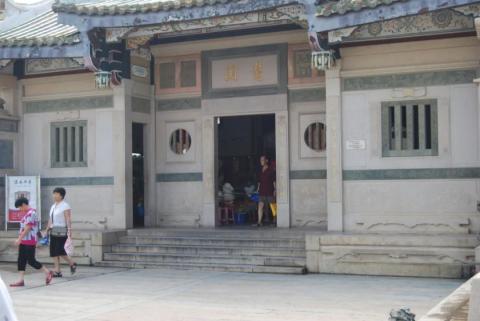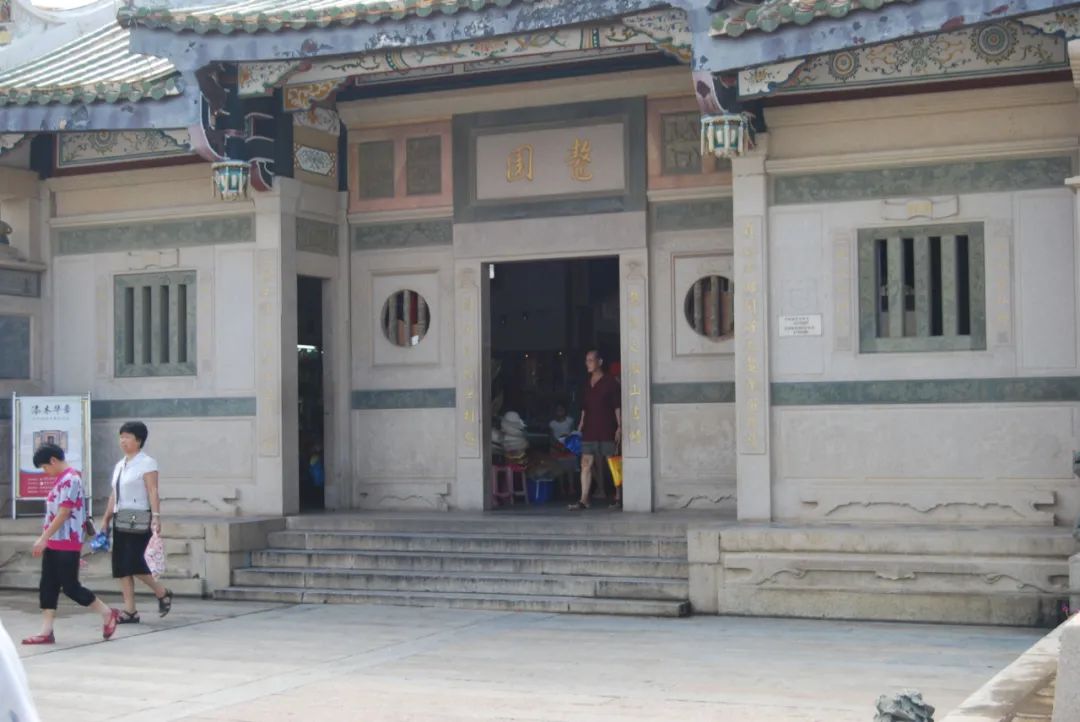
Time:2012year8month9day
Location: Jimei District, Xiamen City, Fujian Province
Jingxiang Travel Notes Chapter 30丨Xingyao Jimei
Traveling to Fujian is nothing more than Gulangyu Island and Wuyi Mountain, but before I went to Gulangyu Island, I first went to an awe-inspiring place - Aoyuan.

I visited Jimei many years ago, and the memory that remains in my mind is the star in the sky, which does not shine with cold light. Looking at it is like the eyes of a loving mother, warm and full of love; looking at it is like seeing a lit candle in the dark night. Although it cannot eliminate the darkness of the entire earth, it is enough to fill the area within its reach with brilliance. This planet, numbered 2963, was discovered by the Purple Mountain Observatory of the Chinese Academy of Sciences on 1964 on 11 month 9. Although it was born in the vast universe, it shines because of its beauty. It is the planet named "Tan Kah Kee Star" on 19903 month 31.

A TV series "The Heroes of Nan Chiau Mechanics" reminded me of Tan Kah Kee. After learning that his motherland needed a large number of car drivers and repairmen, this leader of the overseas Chinese in Southeast Asia issued "Announcement No. 6 of the South Overseas Chinese Association" to call on young drivers among the overseas Chinese. He and the mechanics returned to China to participate in the Anti-Japanese War and fight with the country. The announcement received an immediate response, and many patriotic overseas Chinese enthusiastically signed up. At that time, a total of 3,192 overseas Chinese volunteered to return to China to aid the Anti-Japanese War. They were called " Nanyang Overseas Chinese Mechanics Returning Service Group " , and they returned to China in batches 9 successively. This is the historical background of the TV series "The Heroes of Nanqiao Machinery".

At that time, the Burma Highway was the only channel for our country to receive foreign aid and purchase foreign materials. It was an anti-Japanese supply line built by the National Government in 1938. Since China has just transformed from a feudal society, productivity is low, and there are very few people who can drive and repair cars. If the Nanyang Overseas Chinese Association led by Tan Kah Kee had not summoned more than 3,000 drivers and repairmen from Southeast Asia to return to China for support, I am afraid that the Burma Highway could only be It's just a decoration and cannot play its intended role. The touching deeds of the Nanyang driver in "The Heroic Biography of Nanqiao Mechanics" are actually a portrayal of the real situation at that time.

Of course, this overseas Chinese leader’s contribution to the motherland goes beyond this, and this is just a fragment of his great contribution. Tan Kah Kee devoted his whole life to education. The Jimei campus today was built with donations from Tan Kah Kee 100 years ago! The most touching thing is that a corner of his former residence was bombed by the Japanese army, and the school building was also damaged to varying degrees. He allocated funds to repair the school building, but was not in a hurry to tidy up his own house. Finally, use the leftover materials from repairing the school building to organize your own house.

Ao Yuan is Tan Kah Kee’s cemetery. A sculpture - of burning candles built at Tan Kah Kee's cemetery is an ode to his burning himself to illuminate others.

Even Mao Zedong wrote an inscription for him: Overseas Chinese flag, national glory.
Aoyuan is a small island located in the southeast of Jimei, with a total area of 8990 square meters. Because it looks like a turtle, it is named " Aoyuan " . Ao Garden is divided into three parts: the porch, Jimei Liberation Monument and Mr. Tan Kah Kee’s Mausoleum.
Entering the park is a 50-meter-long porch, with 40 bluestone reliefs of ancient and modern historical figures engraved on the walls on both sides.

These three-dimensional serial statues feature various figures and vivid images.

What's even more amazing is that it can carve out various expressions of joy, anger, sadness and joy.

The carvings are very delicate and high-precision: the rolling red flag is as thin as a piece of paper, and the raised sword is as thin as a pen and chopsticks. It is truly an ingenious workmanship and a miracle on earth!

The person who has such financial resources to build a mausoleum is of course Tan Kah Kee himself. The design of this mausoleum comes from his thinking.
The Jimei Liberation Monument is located in the center of the park. The monument is 28 meters high, majestic and towering, built of granite.

On the front of the monument are the seven characters of Mao Zedong's gilded handwriting: "Jimei Liberation Monument". Since I didn’t take a full picture of the monument at that time, I had to search for a panoramic photo from the Internet to supplement it:

On the back is an inscription written by Mr. Tan Kah Kee himself, totaling 284 words. The base of the monument has four steps: 13, 10, 8 and 3.
Like many of his compatriots, Tan Kah Kee also used the number of buildings to express a certain meaning: Level 13 represents the years when his career was at its peak, Level 10 represents the years when he encountered difficulties, Level 8 represents the eight years of the War of Resistance, 3 It was a three-year war of liberation.
The stone railings at the base of the stele are engraved with various rare birds, monsters, and exotic flowers and plants. On the front of the monument is a relief sculpture of the first session of the National Committee of the Chinese People's Political Consultative Conference and a group photo of party and state leaders. In front of the monument is a 7-meter-high and 30-meter-wide screen wall with the word "Museum" engraved in the middle and 12 reliefs. In the middle of the reliefs are three maps of China, Fujian Province and Taiwan Province, reflecting Mr. Chen's desire for the reunification of the motherland. desire.

Mr. Tan Kah Kee died of illness in Beijing on 1961 on 8 month 21 at the age of 88. In 1988, the State Council listed the Tan Kah Kee Mausoleum as the third batch of key cultural relics protection units in the country.
After leaving Aoyuan Garden, we went straight to Gulangyu Island. This is a well-known scenic spot that most people have visited, so I won’t go into details in this travel note.
In the next article, we will walk into Wuyi Mountain with you and take a bamboo raft to Jiuqu River to explore the scenery on both sides of the river.
